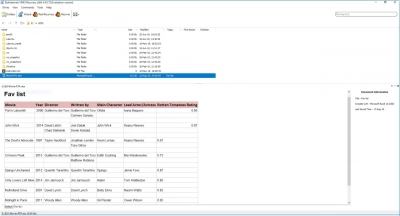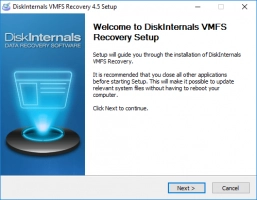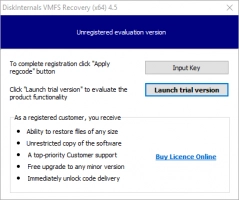What is the difference between VMware vCenter vs vSphere
VMware has carved a niche for itself as a frontrunner in the IT sector, offering a suite of products that have transformed the management and deployment of IT resources. Two of its flagship products, VMware vCenter and vSphere, are frequently mentioned together within the VMware ecosystem. However, it's important to recognize that while they are often used in conjunction, they fulfill different yet complementary roles.
In this article, we aim to clarify the distinctions between VMware vCenter and vSphere. We'll delve into the specific functionalities of each, exploring how they individually contribute to the virtualization field and how their combined use leads to a more effective and adaptable IT infrastructure. This guide is tailored for IT professionals, business leaders, or anyone interested in comprehending the nuances of VMware's offerings. You will gain a lucid understanding of both vCenter and vSphere, laying the groundwork for a more profound exploration of virtualization technology and its prowess.
What is VMware vSphere
VMware vSphere is a suite of products and services for virtualization developed and marketed by VMware, a subsidiary of Dell Technologies. It is widely recognized as one of the leading virtualization platforms in the IT industry. Here's an overview of its key components and functionalities:
1. ESXi: At the core of vSphere is ESXi, a type-1 hypervisor that runs directly on the physical hardware (often referred to as "bare-metal"). Unlike older versions that used a Linux kernel, modern ESXi versions are built on VMware's own kernel, making it more efficient and secure.
2. vCenter Server: While not part of vSphere itself, vCenter Server is commonly used in conjunction with it. vCenter provides centralized management for vSphere environments, enabling IT administrators to control multiple ESXi hosts and virtual machines (VMs) from a single console.
3. Virtual Machines (VMs): vSphere enables the creation and management of VMs. These VMs are abstracted from the underlying physical hardware, allowing multiple virtual machines to run on a single physical server. Each VM can run its own operating system and applications.
4. vMotion: This feature allows for the live migration of running VMs from one ESXi host to another without downtime, enhancing flexibility and aiding in load balancing and maintenance.
5. Storage vMotion: Similar to vMotion, Storage vMotion enables the live migration of virtual machine disk files between and across shared storage locations without service interruption.
6. High Availability (HA): vSphere HA provides increased availability for virtual machines by pooling them and their hosts into a cluster. If a host fails, its VMs are automatically restarted on other hosts in the cluster.
7. Distributed Resource Scheduler (DRS): DRS dynamically balances computing resources among various hosts under its management by moving VMs as needed based on predefined rules and policies.
8. Fault Tolerance (FT): This feature provides continuous availability for VMs by creating and maintaining a live shadow instance of a VM on a different host. If the primary VM fails, the shadow instance immediately takes over without any data loss or downtime.
9. Network Virtualization: vSphere can also virtualize network resources, allowing for complex networking topologies to be created and managed entirely in software.
10. Storage Virtualization: It integrates with VMware's software-defined storage solutions like vSAN, allowing for advanced storage capabilities, including automated storage tiering and thin provisioning.
What Does vSphere Do?
VMware vSphere is a comprehensive suite of server virtualization products that provides a robust, scalable platform for virtualizing IT infrastructure. It transforms physical hardware into a shared, virtualized environment, offering several key functionalities:
- Server Virtualization: At its core, vSphere uses its ESXi hypervisor to virtualize physical servers. This process allows multiple virtual machines (VMs) to run on a single physical server, each with its own operating system and applications. This leads to better utilization of hardware resources, reduced hardware costs, and easier management.
- Centralized Management: Through the vCenter Server, vSphere provides centralized management for the entire infrastructure. Administrators can manage multiple ESXi hosts and hundreds of VMs from a single console, streamlining management tasks and reducing the complexity of handling large environments.
- High Availability and Business Continuity: vSphere's High Availability (HA) and Fault Tolerance (FT) features ensure that applications remain available and data is not lost in case of server failures. HA automatically restarts VMs on other servers if one fails, while FT provides continuous mirroring of a VM to another host, ensuring zero downtime and no data loss during failures.
- Live Migration of VMs: With features like vMotion and Storage vMotion, vSphere enables the live migration of VMs from one host to another without any downtime. This is crucial for load balancing, maintenance, and avoiding disruptions during hardware failures.
- Resource Optimization: Distributed Resource Scheduler (DRS) dynamically balances computing resources among various hosts. DRS automatically moves VMs between hosts to ensure optimal performance based on predefined policies.
- Network and Storage Virtualization: vSphere allows for the virtualization of network and storage resources, enabling more flexible and efficient management. It integrates with VMware's software-defined storage solutions like vSAN and offers advanced networking capabilities through VMware NSX.
- Scalability and Performance: vSphere is designed to scale with the needs of businesses, supporting large-scale operations and providing features to enhance and monitor the performance of VMs and hosts.
- Security Features: With features like Secure Boot and VM Encryption, vSphere offers enhanced security measures for the virtual environment, ensuring that both the hypervisor and the VMs are protected from unauthorized access and threats.
- Compatibility and Integration: vSphere is compatible with a wide range of hardware, operating systems, and enterprise applications, ensuring seamless integration into most IT environments. It also integrates well with cloud services, facilitating hybrid cloud architectures.
In summary, VMware vSphere is a powerful tool for IT organizations, enabling them to create and manage a virtualized environment that is efficient, resilient, and scalable, while also providing robust security and compatibility features.
Benefits of vSphere
- Improved Hardware Utilization: vSphere allows multiple virtual machines (VMs) to run on a single physical server, significantly improving hardware utilization. This leads to reduced hardware requirements and costs, as fewer physical servers are needed to run the same number of applications.
- Reduced Operational Costs: By consolidating servers and reducing hardware needs, vSphere helps in cutting down power, cooling, and maintenance costs. It also simplifies management tasks, leading to reduced operational expenses.
- Enhanced Business Continuity and Disaster Recovery: Features like High Availability (HA), Fault Tolerance (FT), and vMotion contribute to enhanced business continuity. They ensure minimal downtime and data loss, which is crucial for maintaining business operations during hardware failures, disasters, or maintenance periods.
- Increased IT Agility and Responsiveness: vSphere enables rapid deployment of new applications and services by allowing IT teams to provision and configure VMs quickly. This agility is vital for businesses to respond swiftly to changing market demands and opportunities.
- Scalability and Flexibility: vSphere is highly scalable, supporting small to large environments with ease. It provides the flexibility to scale IT resources up or down as needed, which is particularly beneficial in fluctuating workloads and growing business demands.
- Enhanced Application Performance and Availability: With features like Distributed Resource Scheduler (DRS) and Storage I/O Control, vSphere optimizes the performance of applications by dynamically balancing resources. This ensures that critical applications always have the necessary resources for optimal performance.
- Improved Security: vSphere includes various security features, such as VM Encryption and Secure Boot, providing robust security for data and applications. It helps in protecting the infrastructure from unauthorized access and other cyber threats.
- Simplified Data Center Management: The centralized management capabilities of vSphere, particularly through the vCenter Server, simplify the management of the data center. It provides a unified and intuitive interface to manage the virtual infrastructure, reducing the complexity and time required for various management tasks.
- Seamless Cloud Integration: vSphere facilitates a seamless transition to the cloud, supporting hybrid cloud environments and allowing businesses to leverage the scalability and flexibility of cloud computing.
- Ecosystem and Community Support: Being a market-leading product, vSphere has a vast ecosystem of third-party integrations, plugins, and a strong community support system. This ecosystem ensures that businesses can find solutions and support for a wide range of use cases and challenges.
What is VMware vCenter?
VMware vCenter Server is a centralized management application for VMware vSphere environments. It is designed to provide a unified platform for managing VMware ESXi hosts and the various virtual machines (VMs) running on them.
What Does vCenter Do?
VMware vCenter Server plays a pivotal role in managing VMware vSphere environments, offering a range of functionalities to streamline and enhance the management of virtual infrastructure. Here are the key tasks and capabilities of vCenter Server:
- Centralized Management: vCenter Server provides a centralized platform for managing multiple ESXi hosts and their respective virtual machines (VMs) from a single pane of glass. This significantly simplifies the administration of large-scale virtual environments.
- Resource Allocation and Optimization: It enables efficient allocation and optimization of resources across ESXi hosts. Features like Distributed Resource Scheduler (DRS) automatically balance computing resources among VMs, while Storage DRS does the same for storage resources.
- High Availability (HA) and Fault Tolerance (FT): vCenter Server manages and configures VMware HA and FT features. HA ensures that VMs are automatically restarted on other hosts in the event of a server failure, while FT provides continuous availability for VMs by creating a live shadow instance on another host.
- Live VM Migration: With vCenter, administrators can use vMotion to migrate running VMs from one ESXi host to another without downtime. This is crucial for load balancing, performing maintenance without interrupting services, and responding to impending hardware issues.
- Scalability: vCenter Server supports large-scale environments, managing thousands of VMs and hosts, making it suitable for enterprise-level deployments.
- Monitoring and Performance Management: It provides tools for monitoring the health and performance of the virtual environment, including alerts and notifications for potential issues. This allows for proactive management and troubleshooting.
- Access Control and User Permissions: vCenter Server offers sophisticated access control mechanisms, including role-based access control (RBAC), ensuring that only authorized users can perform certain tasks in the virtual environment.
- Update Management: Through vCenter, administrators can manage and deploy updates and patches to ESXi hosts and VMs, ensuring that the environment remains secure and efficient.
- Backup and Disaster Recovery: vCenter Server supports various backup and disaster recovery solutions, providing tools for ensuring data integrity and recovery in case of failures.
- Extensibility and Integration: It can integrate with other VMware solutions like VMware NSX for network virtualization and VMware vSAN for software-defined storage. Additionally, it supports various third-party plugins for extended functionality.
- Automation and Orchestration: vCenter Server facilitates automation of routine tasks, improving operational efficiency. It can integrate with VMware vRealize Orchestrator for advanced automation workflows.
In summary, VMware vCenter Server is an essential tool for managing vSphere environments, offering capabilities that are crucial for efficient, secure, and reliable operation of virtual infrastructures in both small and large organizations.
Benefits of vCenter
vSphere offers a very wide range of benefits, but some of the most important include:
- Improved security and protection of valuable data
- Reduced IT hardware costs
- Business continuity solutions
- Reduced IT footprint
- Improved service levels
- Improved application quality
The interaction difference between vSphere and vCenter
The difference between vCenter and vSphere is that the vCenter Server is one of the components of the vSphere package.
At the moment, vCenter Server can be installed on Windows Server or Linux-based, but in the future, they promise to give access only through the Linux kernel. VMware vCenter centrally manages ESXi virtual machines and hosts. It is clear that vCenter Server allows you to control access permissions, monitor normal VM performance, and configure notifications. In addition, if a company or enterprise needs additional functions such as vMotion, VMware High Availability, VMware Update Manager, VMware Distributed Resource Scheduler (DRS), etc., then vCenter Server will be a must.
As a result, we can summarize the vCenter Server vs. vSphere: vSphere is an entire VMware virtualization platform whose main goal is to virtualize and optimize the underlying physical hardware resources. In addition, VMware vSphere also provides virtual resource pools for the data center. The vCenter Server, in turn, is an important part of vSphere, with which the capabilities of the administrator and the company as a whole are increased to incredibility.
VMFS Recovery - for data safety on VMware
The unique DiskInternals VMFS Recovery software will help you save and recover the deleted, damaged VMware 8.0 and VMDK files in any given situation.
There is automatic detection of all fundamental components and a quick search for missing files, where possible. All search results, each found file, can be seen for free using the Preview function. Later, you will have the opportunity to purchase a license for this application and export all or part (at your request) of the data found to any remote location.
For the whole process to go quickly and smoothly, use the step-by-step instructions for the DiskInternals VMFS Recovery application.
Downloading and installing the application occurs first.
After that, you open the application and connect via SSH, if necessary.
Then open the drive and click on the scan button. Wait for the process to complete.
Next, you are required to find the VMDK files and mount them.
Further, previewing found files and documents is completely free.

After that, buy a license, then automatically receive a license key. Thereafter, you will have access to export data to any information storage device.
How to backup your VMware?
To back up your virtualization machine (including the OS, application files, user data, and settings) you need a copy of the original folder where the VM is stored. Follow the steps below:
- Power off your virtualization machine. Leaving the VM running while copying it may result in a copy that refuses to boot.
- Locate the target folder you want to copy.
- Right click the folder and then click copy or press Ctrl+c.
- Select your preferred destination location.
- Press Ctrl+v or right click within the folder and click paste. You will see a progress bar that indicates the process is underway.
- Once the process is finished, power on the copied VM. Workstation prompts you to specify whether you have copied or moved the VM.
If you indicate that you have moved the VM locally on the hard drive, all settings will be retained. On the other hand, the “Copied it” option will warrant the generation of a new MAC and UUID address to ensure that no conflicts arise in the network.



